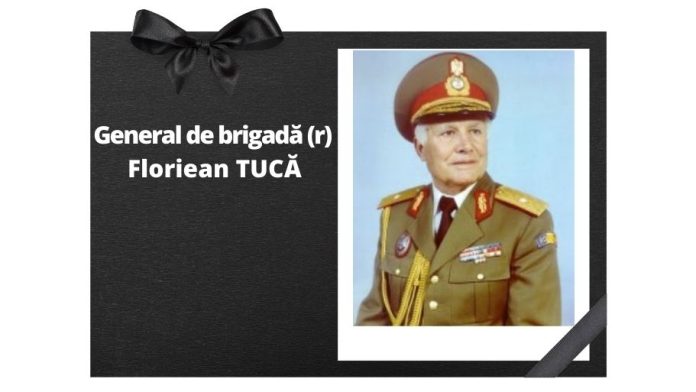Brigadier General Floriean TUCĂ, Corresponding Member, Military Sciences Section
12 August 1928. Curtea de Argeș – d. April 2022, Bucharest
The Academy of Romanian Scientists announces with deep sadness the passing away of Brigadier General (r) Floriean TUCĂ, Corresponding Member of the Military Sciences Section
Doctor in historical and philosophical sciences (1976), renowned novelist and novelist of military literature, General Floriean Tucă was director of the Military Publishing House, an expert in the field of historical monuments, in the historical study of Romanian state personalities from all eras.
Author of more than 2000 scientific communications, studies, articles, historical evocations, documentations for historical dictionaries, published in specialized journals or in the central press, he will remain in the heritage of historical and military sciences in Romania, of which we mention only a few titles: In Memory of Heroes, Bucharest, 1960; Historical Field of Marasti. History of the mausoleum at Mărăști, Bucharest, 1973; Places and Monuments of the Passo, Bucharest, 1978; Monuments of the war years. Dictionary, Bucharest, 1983; A flame pierces the ages. The Romanian Revolution of 1848-1849, Bucharest, 1998; Poezii e cântece pașoptiste, Bucharest, 1998; Legenda Mănăstirii Argeșului, Bucharest, 2002; The days and nights of a lumberjack. Autobiographical landmarksBucharest, 2004; Chronicles in Stone of Independence: “The Heroes of Grivița and Smârdan”, Bucharest, 1977; The Monuments of Struggle, Bucharest, 1985; For you they died, Sfântă Libertate, Bucharest, 1989; Craiul Mulților, Avram Iancu, Bucharest, 1993; Armand Călinescu’s Testament, Bucharest, 1994; The Liberation of the Last Romanian Land – Careii Mari, Bucharest, 1994; What cannot be forgotten: Five decades since the Romanian army’s battles for the liberation of Budapest, Bucharest, 1995; The tragic fate of Romanian monuments in Bucovina, Bucharest, 1995; The Eternal Romanian Land of Bessarabia, Bucharest, 1996; Why the peasants revolted in 1907, Bucharest, 1997; Monuments dedicated to the peasant uprising of 1907, historical documents in stone, Bucharest, 1997, Epopeea Anilor 1916-1918, Razboiul pentru Faurirea Romaniei Mari (co-author Romulus Raicu, 1998), Voivodes, rulers, princes, kings, presidents and other heads of state in the Romanian space (co-author Cristache Gheorghe) (2006).
We will always remember the professionalism, kindness, dedication to history and scientific studies of our former colleague, Brigadier General (r) Floriean TUCĂ.
God rest his soul!


